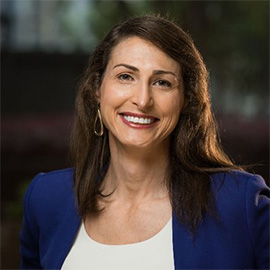My long-term vision is to finally develop a more comprehensive public transportation system that meets the needs of not only our city residents, but is one that also has regional relevance. I am excited about the reboot of Project Connect and look forward to the upcoming announcement by Capital Metro and their partners about what this system may look like. Just like other major cities, we need a core network of high-capacity transit. This network must have dedicated guideways; whether lanes, rails or ‘virtual rails’ with autonomous vehicles. The key point, and this is a very important point, is that transit must be separate from other traffic and have priority. When we build a system that is faster, easier, and less stressful than driving, people will flock to it. These high-capacity corridors must be fully integrated with a network of local routes and other ‘last mile’ solutions. We must also enact land use policies that will support this network, which means more density along and near the corridors. As perhaps the first transportation engineer ever on City Council and as the representative from central Austin, I will be an absolute champion for improving our mobility. In the shorter-term, I have a few ideas I’d champion. First, I believe we have a real opportunity with the IH-35 reconstruction project to partner with TxDOT, the City, and Capital Metro to develop meaningful public transportation alternatives for UT, Capitol Complex, and downtown workers. As the downtown segment of IH-35 is reconstructed, let’s develop a construction ‘traffic control’ solution that provides downtown shuttles / bus rapid transit (BRT) from park-and-ride locations outside of the construction zones. It could follow a route similar to that identified as the Project Connect Gold Line and help jump-start a shift in commuter behavior to ditch their cars before coming into Central Austin. Second, we must prioritize operational improvements to our roadway network. Although we’ll never ‘solve’ traffic congestion, we can and should keep making intersection adjustments to enhance safety and operation. For example, small changes like striping left turn bays at more downtown intersections will help. Pedestrian safety must alway be our first priority. It is tragic that 18 pedestrians have already been killed this year. Third, since we can’t afford to build all the infrastructure we’d like, let’s also create meaningful economic incentives to reduce single-occupancy vehicle trips. Working with private employer, and public agencies, let’s assign a value to what has long been seen as “free” parking. I envision a model that is cost-neutral to the user. It could look like this. – Give every employee $100/month transportation allowance but also charge $100/month for parking. Some employees will choose to pocket the money, reducing parking demand, and traffic. As parking spaces are liberated, they can them be used for paid public parking.
Mobility, Austin Chamber of Commerce
View All Reponses >>

